 The patron saint of animals, Saint Francis of Assisi was an Italian monk canonized as a saint in 1228. Born into a wealthy family, he was a soldier and prisoner of war before he experienced a conversion in his early 20s. He sold his property, gave the money to the church, and began a life of poverty and devoutness. He soon attracted followers and became the founder of the Franciscan order of friars. Catholics believe that Saint Francis was the first person to exhibit stigmata, which are what? Discuss
The patron saint of animals, Saint Francis of Assisi was an Italian monk canonized as a saint in 1228. Born into a wealthy family, he was a soldier and prisoner of war before he experienced a conversion in his early 20s. He sold his property, gave the money to the church, and began a life of poverty and devoutness. He soon attracted followers and became the founder of the Franciscan order of friars. Catholics believe that Saint Francis was the first person to exhibit stigmata, which are what? Discuss
Source: The Free Dictionary
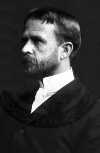 Morgan was an American zoologist noted for his ingenious demonstration of the physical basis of heredity and the importance of the gene. He was awarded the Nobel Prize in Physiology or Medicine in 1933. Initially skeptical of Gregor Mendel’s research and Charles Darwin’s theory of natural selection, Morgan performed rigorous experiments demonstrating that genes were discrete chromosomal units of heredity. Much of his research was done by observing Drosophila melanogaster, which is what?
Morgan was an American zoologist noted for his ingenious demonstration of the physical basis of heredity and the importance of the gene. He was awarded the Nobel Prize in Physiology or Medicine in 1933. Initially skeptical of Gregor Mendel’s research and Charles Darwin’s theory of natural selection, Morgan performed rigorous experiments demonstrating that genes were discrete chromosomal units of heredity. Much of his research was done by observing Drosophila melanogaster, which is what? 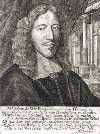 De Witt was a Dutch statesman who played a vital role in the three successive Dutch Wars. He helped end the first in 1654, but the English Restoration was considered a threat to Dutch interests and the conflict was renewed in 1665. He was largely responsible for securing for the Dutch the favorable terms of the treaty that ended the second of the wars and helped form the Triple Alliance against Louis XIV, who nevertheless invaded Holland in 1672. Why was de Witt lynched shortly thereafter?
De Witt was a Dutch statesman who played a vital role in the three successive Dutch Wars. He helped end the first in 1654, but the English Restoration was considered a threat to Dutch interests and the conflict was renewed in 1665. He was largely responsible for securing for the Dutch the favorable terms of the treaty that ended the second of the wars and helped form the Triple Alliance against Louis XIV, who nevertheless invaded Holland in 1672. Why was de Witt lynched shortly thereafter? .jpg) Mary Mallon was the first person in the US to be identified as a healthy carrier of typhoid fever. In 1904, a typhoid epidemic was traced to homes where she had been a cook. She fled but was located by authorities and forcibly quarantined for several years. In 1910, she was released on the condition that she not take another food-handling job. Discovered cooking again in 1914, she was quarantined for life. Though she herself never had the disease, she infected about 50 people. How many died?
Mary Mallon was the first person in the US to be identified as a healthy carrier of typhoid fever. In 1904, a typhoid epidemic was traced to homes where she had been a cook. She fled but was located by authorities and forcibly quarantined for several years. In 1910, she was released on the condition that she not take another food-handling job. Discovered cooking again in 1914, she was quarantined for life. Though she herself never had the disease, she infected about 50 people. How many died? 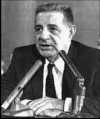 Valachi, a New York gangster, was the first Mafia member to publicly acknowledge the organization’s existence. A “soldier” in New York City’s powerful Genovese crime family, he testified before a congressional committee on organized crime in 1963, disclosing details about the Mafia’s history and operations and making “Cosa Nostra” a household name. Three years later, he attempted suicide in his prison cell but survived. Why did Vito Genovese put out a $100,000 contract on Valachi in 1962?
Valachi, a New York gangster, was the first Mafia member to publicly acknowledge the organization’s existence. A “soldier” in New York City’s powerful Genovese crime family, he testified before a congressional committee on organized crime in 1963, disclosing details about the Mafia’s history and operations and making “Cosa Nostra” a household name. Three years later, he attempted suicide in his prison cell but survived. Why did Vito Genovese put out a $100,000 contract on Valachi in 1962? 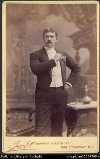 Maurice Barrymore was the first in the famous family of Barrymore actors. In 1875, a few years after he began his acting career in London, Barrymore went to New York and became an instant success. Over the next 25 years, he starred in a variety of roles. In 1876, he married Georgiana Drew, the actress daughter of famous British-American actors John and Louisa Lane Drew, thus founding what would become known as “The Royal Family of Broadway.” Who are the other famous Barrymore actors?
Maurice Barrymore was the first in the famous family of Barrymore actors. In 1875, a few years after he began his acting career in London, Barrymore went to New York and became an instant success. Over the next 25 years, he starred in a variety of roles. In 1876, he married Georgiana Drew, the actress daughter of famous British-American actors John and Louisa Lane Drew, thus founding what would become known as “The Royal Family of Broadway.” Who are the other famous Barrymore actors?  Sinclair was a prolific American novelist and socialist activist who wrote over 90 books, including The Jungle, a best-selling muckraking exposé of conditions in the Chicago meat-packing industry that aroused public indignation and resulted in the passage of food inspection laws in the US. He also organized a socialist reform movement in the 1930s and won the Democratic nomination for governor of California but was defeated in 1934. For what book was Sinclair awarded the Pulitzer Prize?
Sinclair was a prolific American novelist and socialist activist who wrote over 90 books, including The Jungle, a best-selling muckraking exposé of conditions in the Chicago meat-packing industry that aroused public indignation and resulted in the passage of food inspection laws in the US. He also organized a socialist reform movement in the 1930s and won the Democratic nomination for governor of California but was defeated in 1934. For what book was Sinclair awarded the Pulitzer Prize? 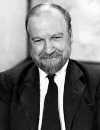 Praised for his highly imaginative and original writings, Golding was a British author whose works focus on the eternal nature of man. He won the Nobel Prize in Literature in 1983 and was knighted in 1988. In his best-known work, the allegorical Lord of the Flies, he described the nightmarish adventures of a group of English schoolboys stranded on an island and traced their degeneration from a state of innocence to blood lust and savagery. What else did he write?
Praised for his highly imaginative and original writings, Golding was a British author whose works focus on the eternal nature of man. He won the Nobel Prize in Literature in 1983 and was knighted in 1988. In his best-known work, the allegorical Lord of the Flies, he described the nightmarish adventures of a group of English schoolboys stranded on an island and traced their degeneration from a state of innocence to blood lust and savagery. What else did he write? 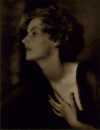 Born in Sweden, Garbo appeared in publicity films for the store where she worked as a young woman. She later studied at the prestigious Royal Dramatic Theatre in Stockholm, where she was discovered by film director Mauritz Stiller. She appeared in her first film in 1924, and her beauty and enigmatic personality made her a star. She made only a handful of films and retired abruptly in 1941 at the age of 36, later living in legendary seclusion. What were some of her most famous roles?
Born in Sweden, Garbo appeared in publicity films for the store where she worked as a young woman. She later studied at the prestigious Royal Dramatic Theatre in Stockholm, where she was discovered by film director Mauritz Stiller. She appeared in her first film in 1924, and her beauty and enigmatic personality made her a star. She made only a handful of films and retired abruptly in 1941 at the age of 36, later living in legendary seclusion. What were some of her most famous roles? 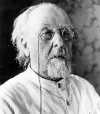 Tsiolkovsky was a Russian inventor and rocket expert who was an early investigator of the possibility of rocket flight into outer space. In 1903, he published The Investigation of Outer Space by Means of Reaction Apparatus, which discussed the problems involved in overcoming the earth’s gravitational pull and suggested the use of reaction vehicles for interplanetary flight. After losing his hearing as a child, Tsiolkovsky could not attend regular schools. How was he educated?
Tsiolkovsky was a Russian inventor and rocket expert who was an early investigator of the possibility of rocket flight into outer space. In 1903, he published The Investigation of Outer Space by Means of Reaction Apparatus, which discussed the problems involved in overcoming the earth’s gravitational pull and suggested the use of reaction vehicles for interplanetary flight. After losing his hearing as a child, Tsiolkovsky could not attend regular schools. How was he educated?